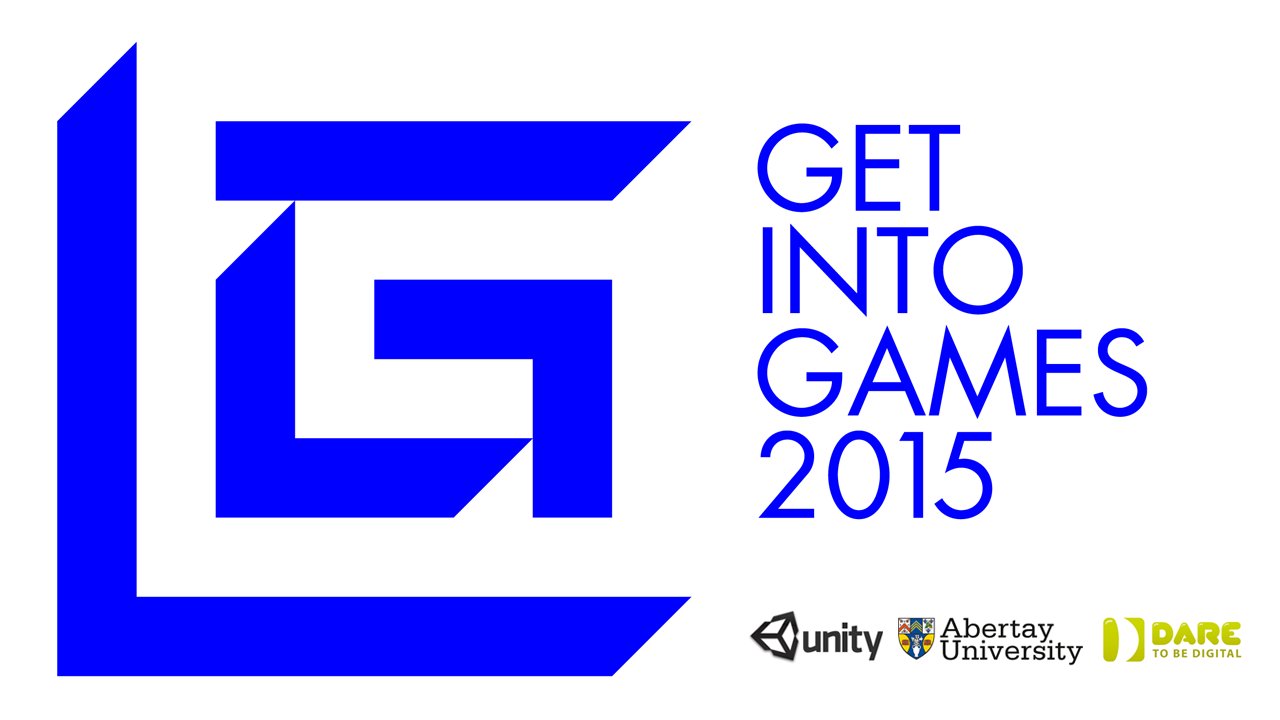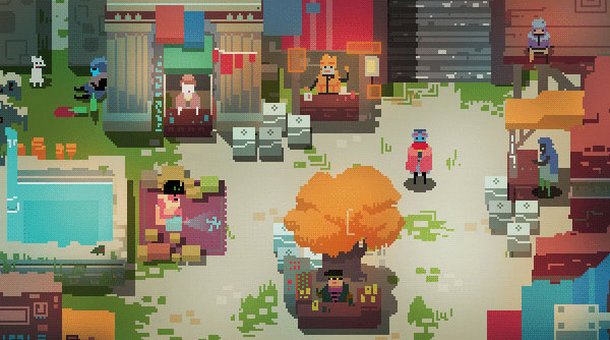Get Into Games 2015: Create expectations

Making games – even the comparatively small ones – is a complex, time-consuming business, but it needn’t be expensive. At least not to begin with. There’s now a multitude of tools available for nascent game creators to use at little or no cost, and all manner of ways to get your project into the hands of players. Today’s industry is extremely different to the one that existed a decade ago – a scene that had yet to experience the impact of Xbox Live, iOS or Unity – and offers more opportunities for creators than ever before, though more competition with them. With such a wealth of options out there, narrowing down exactly where you should focus your efforts is a daunting task, and it’s easy to get caught up in the notion that mainstream 3D packages such as Unreal Engine and Unity are the only options worth considering. While becoming proficient in either would certainly be an excellent way to catalyse your game career, it’s not just about the big names.
“I believe that making the game you want to make, with the engine that is appropriate, is all that matters,” says Funomena CEO Robin Hunicke. “Games like Mainichi, Dys4ia and Lim, Today I Die, Windosill, A Dark Room, Gone Home – they all moved me without being intense, 3D experiences in Unreal. It isn’t the tool that people remember, it’s the experience. And when it comes to demonstrating skill or being able to show you can work with others, the tool will be the least important part of the equation. It will be your curiosity and ability to learn and communicate what you do that stand out.”
And in a world where an experience can count for more than raw technical skill, it’s possible to make some surprising discoveries. Gunpoint creator and former PC Gamer writer Tom Francis fell into making games when he realised that Spelunky was created using YoYo Games’ GameMaker: Studio. “It’s one of my favourite games ever, and when I found out you could make something like that in a tool aimed at beginners, I felt I’d run out of excuses not to give game making a try,” he tells us.
GameMaker: Studio is one of many tools that sacrifice top-end aesthetics in order to specialise in simpler, 2D projects, but that hasn’t stymied its popularity with professional designers. Along with Spelunky, Gunpoint and Francis’s in-development Heat Signature, GameMaker can also boast of being the foundation for high-profile projects such as Hotline Miami, Nidhogg and Hyper Light Drifter.
Francis is so enamoured of it, in fact, that he’s published a series of tutorials (www.bit.ly/MakerTuts2) for the free version of GameMaker, aimed at people with little time and even less experience. “It’s ridiculous,” he says. “I owe literally my entire livelihood for the past two years, and many more to come, to a copy of GameMaker that cost me $30, and I pay them no royalties. The current version costs $100, which I dare say hasn’t pushed it into unreasonable territory.”
"A great portfolio demonstrates that you have a strong sense of your own style"

Going too big too early is a common mistake, Tom Francis warns: “I think you learn loads by going through the whole process from start to finish, so the sooner you can do that, the smarter you can be about how you go about your big project. I did a game jam halfway through Gunpoint, and that was a real education in learning how to make massive, brutal cuts to what you have planned. On day two of that game jam, I had to cut about half the features I had planned, and I ended up doing pretty much that with Gunpoint on a much bigger scale. Having been through it once, I knew that cutting things you love doesn’t mean that what’s left will feel incomplete: your plan is usually over-complicated.”
Although Francis’s particular route into game creation means that he’s never had to apply for a job, his work on Gunpoint has yielded two offers from game studios that he chooses not to name. And he believes that it’s easier now than it ever was to create something on your own. That’s not to say you shouldn’t think about joining a team, however, even if it’s one made up of only a dozen or so members, but be aware that working in a small unit brings its own challenges.
“What we look for right now above everything else is the ability to handle uncertainty with grace,” says Hunicke when we ask her what she looks for in new hires. “Right now, everything about Funomena is evolving. We can’t make a profit until we finish our games – that’s the nature of starting a new business. Until we understand and complete the design of the games we’re making, they will be in a state of flux – that’s the nature of game design. So the number one skill we look for is creativity in the face of all these unknowns.”
Weekly digests, tales from the communities you love, and more
But Hunicke also points out that having a game-related degree will prove to studios that you are able to make and meet commitments. As you’ll see from our survey of some of the top UK and European institutions (links at the top of this article), there is an ever-greater choice of specialised courses for those who want to build their career on a strong educational foundation. Whether a degree is right for you depends on what kind of role in the industry you want to have. Degrees tend to carry far greater weight for roles at studios at the larger end of the industry spectrum, but investing the time in an undergraduate or postgraduate programme will also help you to build an arguably even more important piece of the puzzle: your portfolio.
“A great portfolio will demonstrate that you have a strong sense of your own style and great skills for executing it – [and this is] key for many disciplines,” Hunicke continues. “But if you are fragile in the face of uncertainty, you will be overwhelmed by working in a small, tightly knit team where every day counts for so much. In our experience, thriving in an evolving environment is more about your attitude towards change than your schooling, experience or level of skill at a given job. So, right now, we’re very focused on hiring people who can handle the unique pressures of being at a company like ours.”
Richard Jolly, the co-founder and CMO of Wolfenstein: Enemy Territory studio Splash Damage, is similarly focused on personality when he makes his hires. “First and foremost, as a multiplayer-focused studio, we look to hire competitive gamers,” he tells us. “It’s very much at the core of our DNA as a studio; even before becoming a mod team, we used to play against each other in competitive clan matches. We’ve also been drilling down into the sort of person that fits the Splash Damage culture after a long process of interviews with our top employees. Loyalty, self-reliance and friendliness are at the top of the list – we’re not interested in hiring geniuses who aren’t team players, no matter the skillset. We’re after people who put the team’s interests and needs first, and who, incidentally, are great at their jobs.”

As Jolly points out, Splash Damage’s roots lie in mod making, another viable route into the game industry. Just look at the likes of Counter-Strike, DayZ and even, it’s easy to forget, Dear Esther. “Huge successes such as DayZ prove that mods can lead to legitimate standalone games,” Jolly says. “Our new shooter, Dirty Bomb, wouldn’t even exist if it wasn’t in the lineage of our multiplayer mod for Quake III. Game companies are often more interested in seeing potential hires that have real-world experience over a fancy degree. Working well in a team is super-important to us at Splash Damage, and mod-making is a great first step to prove [you can do this].”
One advantage of cutting your teeth on mod making is that you’ll most likely be using the tools, or at least a version of them, created by a given studio for its game. While ZeniMax’s purchase of id means the Doom 4-powering id Tech 6 engine is inaccessible, older versions of the engine are now open source. And, inspired by Unity’s sales model, Epic Games and Crytek have both released low-cost (in the case of the former, entirely free) versions of their industry-standard tools for all. This approach is also beginning to be adopted by other companies as well, who are perhaps less well known but equally important.
London-based specialist The Foundry made its name building powerful post-production tools for movies. Harry Potter, Iron Man, Avatar and Gravity are just a handful of the films whose visuals rely on software developed by the company, but a surprisingly large portion of the game industry uses them too. Modelling and rendering suite Modo and 3D painting tool Mari might not be as well known as Maya, 3DS Max and Zbrush, but they’re extensively used, and now The Foundry is making ‘Indie’ versions of its software available on Steam on a considerably more affordable subscription basis.
“We think our software is pretty powerful, and so we want new and aspiring game developers to try it out and tell us if they agree,” product marketing manager Shane Griffith tells us. “Our tools are very well known in some of the top studios in the world, and Mari Indie and Modo Indie provide a very approachable means for everyone to experience the power of these tools.”
Only a few years ago, the idea that, in the case of Mari, a piece of software that was originally developed by visual effects giant WETA would be available for a tenner a month with no commercial limitations attached would be unthinkable. But the huge swell of smaller independent creators and teams is driving prices down and the importance of accessibility up.
"The massive uptake of gaming makes for more opportunities, but also competition"
“This is about helping someone get into the industry and start creating really cool game assets,” Griffith says. “If we put commercial limitations on the software, it would completely defeat the purpose. Of course, we need to put some limitations on the [software] to be able to offer it at the price point we have, but we committed to ensuring it had value from a business perspective as well as a creative one.”
Catering for an entirely different game creation need is Clickteam, though it shares The Foundry’s interest in giving newcomers and modest operations a leg up. Along with its own games, the company also develops Clickteam Fusion, a 2D game creation tool along similar lines to GameMaker, which aims to accelerate your grasp of basic programming concepts.
“We are constantly looking for ways to help aspiring indie developers,” VP of US operations Chris Carson tells us. “Fusion can take someone with zero programming skills and teach them the concepts of programming in no time at all – the basics of the tool can be learned within an hour.”
“And one of the advantages of a tool like Clickteam Fusion, compared with programming languages, is that the low-level debugging is done [for you],” adds founding developer Yves Lamoureux. “That means no syntax errors, so you can focus on your game logic instead of losing time on boring things, which [makes creating] game prototypes much faster.”
The strengths of tools such as Clickteam Fusion and GameMaker are in their self-imposed limitations and simplicity, but you’ll need to carefully consider whether those limitations are right for you. Still, it’s worth bearing in mind that creation software is subject to continual development, as attested to by Unity’s trajectory over the past decade, seeing it grow from a simplistic 2D tool to a powerful 3D development suite used across the industry.

“We believe that when it comes to 2D game or app creation, nothing beats the versatility and speed of developing in Fusion,” Carson says. “As with any programming language, Fusion has its core strengths but also areas where we need to improve. For instance, there currently isn’t a good 3D development system in Fusion – if you wanted to make a 3D game, you would want to look somewhere else. But we’re constantly thinking about these areas of potential improvement and how we can improve the tool in future versions.”
Although he hasn’t attempted to explore its boundaries, Francis points out that GameMaker isn’t particularly suited for 3D either, but there are other issues to be aware of, too. “It’s a bit of a pain to make your game look right on everyone’s screens,” he says. “Even after years of tinkering with how to configure it [with this in mind], I’m still finding my game is weirdly stretched or has interpolation artefacts on someone’s display. And it’s very strict about where you can save your player’s data now – it has to go in that weird ‘AppData’ folder that no normal human has ever seen or would know how to find.”
Francis has also experimented with Unity, but he found it more difficult to learn than GameMaker, recommending the latter as a better option for finishing a project without getting overwhelmed by technicalities. “Unity seems like a much better option for 3D, or any project where you want to use a lot of tech that’s tough to make but already exists,” he says. “And Unity’s asset store lets you buy that stuff cheaply and plug it in. GameMaker has an asset store on the way, but right now you can’t access anything from it unless you run the beta version, a risk I’ve learnt to avoid.”
If you already have a basic understanding of game creation, or simply have your heart set on building a 3D game, Unity is still the best, and most commonly used, low-cost tool for the job. Hunicke, whose studio is using Unity for both of its current projects, points out that the large community of developers using it means there’s a sizeable resource of experience to draw upon when you hit a snag. Splash Damage also uses Unity, although it’s reserved as a way of testing out ideas during a project’s early concept phase before the studio exports the game to another engine. And the speed with which a game can be sketched out in software like Unity, Jolly says, makes experience of such tools invaluable.
With so many tools to choose from and learn, has kicking off a career in the industry become easier or harder?
“Both,” says Jolly. “The massive uptake of gaming in everyday society makes for more opportunities, but also more competition. We’ve seen huge studios replicating the look of small indie games as a response to their popularity, and we’ve seen small indie studios creating games that seem triple-A through clever use of technology. As more and more games flood the market, it’s going to take new and interesting ideas to stand out from the crowd.”
Hunicke agrees: “When I started breaking in to games back in 1999, there were a lot fewer developers in general. The community was smaller, but it was open and interested in new people and new ideas. As we’ve grown, we’ve added people, explored new game genres, and created entirely new business models and publishing platforms. But even though it’s a different experience than when I first fell head-over-heels for this industry, I think now is a fantastic time to become a game developer. The challenges are different, the opportunities are different, but they are still there, waiting for new minds, hands and hearts to make a difference. If you feel the call, join us!”
Edge magazine was launched in 1993 with a mission to dig deep into the inner workings of the international videogame industry, quickly building a reputation for next-level analysis, features, interviews and reviews that holds fast nearly 30 years on.




